EXPLORING SUSTAINABILITY: A CONVERSATION BETWEEN OLLE STRANDBERG COLLING AND JIN YIM
SUSTAINABILITY AND INTERNATIONAL RELATIONS – FROM THE LONELINESS TOWARDS THE TOGETHERNESS
In the text you are about to read, we questioned ourselves on what sustainability is. Feeling a persistent loneliness in the post-pandemic era, driving us to seek more connections, our key beliefs include connectivity, diversity, and the crucial role of arts and artists in guiding our future.
Jin
With the shift of thoughts during the last few years of the pandemic, one thing that I have achieved is defining the meaning of sustainability by the resources I have at my disposal. As an independent producer working with different artists and festivals, I can confess that I used to feel lonely, especially because I thought I was the only one who didn’t know what to expect from the future. I realise that the COVID-19 pandemic has officially ended, but this feeling of loneliness has remained in me, still nudging me to move forward to be connected.
A research project on changes of our ecosystem - “New Connections”
I live in South Korea and have never traveled overland beyond the border with North Korea. With the Korean peninsula divided, going abroad always means taking a plane, making it feel like we live on an island. For me, international relations are essential for understanding the world from broader perspectives. I’d like to pose a question to all of you: What did you think about when everything stopped? During the pandemic, as international tours and commissions were canceled, I questioned whether I should continue my job. And if so, why? This led to a shift in my practices, strengthening my resolve as I considered new reasons for engaging with the world through ideas and projects. In 2020, I conducted a research project called “New Connections” with Jisun Park and Kyu Choi, interviewing fifteen art practitioners worldwide about their lives and thoughts amid changes in our ecosystems. We discovered that our world is adapting, finding new ways to survive with more thoughtful approaches to societal issues. Many of us embraced technology, not just as an alternative but creatively, digitalising formats and using online platforms. The climate crisis became a greater concern, leading to discussions on green mobility, slow touring, and deep mobility. Border restrictions heightened our awareness of locality, opening up new possibilities for decentralising our long-held focuses. This experience underscored the need for adaptability and the importance of rethinking our roles and methods in the arts, prompting a deeper connection with both local and global contexts.
New tools of international mobility - “Next Mobility Research Project”
Building on the conversation from the “New Connections” research, the “Next Mobility” project followed. This initiative, spearheaded by KAMS Connection, Performing Arts Market in Seoul (PAMS), and Seoul Performing Arts Festival (SPAF) under the Korea Arts Management Service, explores new international mobility and circulation in the post-pandemic era. The project includes meta research and a creative lab, encouraging us to consider project development by reflecting on the findings from the research. In the project’s first year in 2021, over nine researchers tackled various sub-topics under the theme of ‘next mobility,’ categorised into ‘digital or online creation,’ ‘digital or hybrid mobility,’ ‘new audiences,’ ‘gamification,’ and ‘green mobility with its practices.’ By consolidating these detailed studies, we observed a transformation in the value chain of creation and production, circulation, audience engagement, and consumption. This initial research prompted us to consider new tools and methodologies to overcome the limitations of traditional mobility. One aspect was considering localised contexts by developing processes and outcomes through hybrid mobility. For example, the LIFT - London International Festival of Theatre’s ‘Concept Touring’ focuses on sharing and touring ideas rather than physical travel, emphasising the mobility of concepts. Artists adopting this approach often rely on localisation, collaboration, and digitalisation. This led us to explore ‘deep mobility,’ which aims for deeper understanding and relationships during tours, and ‘slow touring,’ which emphasises a slower, more thoughtful approach rather than prioritising speed and efficiency. Both concepts are linked to ‘greener mobility’ and the ‘green rider,’ considering the environmental impact of production and touring. Our research referenced various cases and tools, consolidating them into a checklist or series of questions for review before, during, and after production. While the first part of the research focused on finding new ways to move, the second year in 2022 shifted to what should be moved, why it should be moved, and the significance of movement. This led us to re-evaluate the fundamental question: how do we define ‘international,’ and what does it mean to us? Perhaps we work internationally because we believe that connectivity and interdependency are key enablers of sustainability. Reciprocity and fairness, embracing diversity, inclusion, and equality, empower us to envision the future together. Artists are arguably the greatest supporters of the world, dedicating so much to the arts in our society. We, as creative human beings, are the greatest resources, and it is up to us to decide which direction we go. For further sustainability, I’d like us to consider the following questions. Some ideas may not seem efficient, but why not think about them together? ̺
- Who is in the room?
- Where do we want to reach?
- What do we need to see, talk about, and share?
- What can we achieve together if we are connected?
I hope these questions will help us explore different perspectives, especially in the darkest times we continuously face. By understanding and embracing diversities, we can distribute and redistribute what we have, addressing urgencies together. Envisioning a future full of multiplicity, we rehearse coexistence, challenge known limits, and make decisions for our shared future.
Olle
In 2020, a Creative Europe project called The Sphere began. The Sphere’s manifesto advocates for using new technologies to create a sustainable economic landscape for the arts, emphasising collective financial efforts, minimised travel, and innovative perspectives. The COVID-19 Pandemic underscored the necessity of such a project. To sustain diverse artistic expression, we must break from established patterns and explore new approaches. During my life as an artist, I have developed a working method based on constantly attacking subjects right at the border that defines the subject itself. If you imagine a subject like a soap bubble, then I see it as my task to try to find the exact spot where the bubble’s membrane transitions from inside to outside. The next step is to defend the immediate outside as an important component and necessity for the inside to be inside. What do I mean now? I mean, if it wasn’t for the outside being so close that it almost looks like part of the bubble, the bubble would have no outline at all. Maybe it would even completely cease to exist? In this text, my approach to the subject is based on my work with the large-scale Creative Europe project “The Sphere,” which I initiated and project-managed since its inception in 2020—the year that made the question of sustainability particularly urgent. Since then, much has been proven unsustainable. However, against my better judgment, I have maintained my belief that it is possible to rethink the roles of artists, venues, audiences, and cultural actors within the performing arts and organise accordingly. That’s the core idea behind The Sphere. How can decision-making and budget responsibility reach the artists and audiences? How can the works produced by performing artists generate more long-term results, rather than short-term impacts? How can these works have longer lifespans or be revived? How can they reach larger and more dispersed audiences without relying solely on digital formats, which can degrade our field of vision and ability to focus? How can we ensure that the funds meant for performing arts creation go directly to artists, rather than being consumed by overhead costs, marketing departments, filming, and administration? My experience after COVID is that the cultural institutions near me had clear safety nets for all staff other than the dancers, choreographers, circus performers or artistic professions that create their actual content and give them a raison d’être. The artists were unpaid and unemployed in a sea of paid communicators who lacked content to communicate, but could afford great home delivered food, while hiding in their flats working from home. In order to reshape the economic game space towards commons-oriented purposes, we need techno-social devices and infrastructures that operate at the protocol level, digital governance tooling allowing for coordination at scale. This is how the Sphere takes shape, by developing techniques to resist the usual flattening of values against the horizon of the merely economically viable, playfully adopting frontend approaches to navigate the positive unconscious — the financial backend — of social life. My hope is that the Sphere ecosystem, powered by the carefully crafted web 3.0 Karmic Engine and animated by an ever-growing number of artists and archivists, can contribute to undoing business as usual by making performance mutual again, thus bringing ourselves closer to the great ecological challenges await us. What we are arguing is that we must embrace the opportunities new technology has given us to rethink the economic infrastructure within the contemporary circus field. The focus isn’t necessarily on finding solutions within blockchain, AI, or cryptocurrencies. Instead, by addressing these emerging technologies, we can uncover new perspectives on age-old questions. For example, how can the work I do as a performing artist and circus performer best serve my environment, subculture, or ecosystem both now and in the future? In Sweden, we usually call what I’m doing now “walking like a cat around hot porridge”. What is the gist of this text? What is my attitude to sustainability? Why do I just circle around the subject like a traumatised person who does not dare to face the cause of my trauma? If we want to ensure a diversity of artistic expression, a diversified audience and a great potential to be both enthralled, amazed and enchanted by performing arts and circus arts. Do we then have to dare to depart from our established patterns? Depart from our strive to collect large quantities of data, funding primarily market-oriented performing arts and securing our cultural institutions with as many administrators as possible? In such cases, it is incredibly interesting to see what AI can do beyond further streamlining and optimising our already ingrained data collection pattern. It is interesting to see how an internet can work outside of big data and algorithm-driven social media. The Sphere has found a way to allow artists to gather around a common financial pool to fund projects to share their learnings, their performances and allow new artists from other countries, fields of knowledge and contexts to carry these forward into the future. This hopefully means a kind of touring of ideas and productions that are set up in new ways locally, that minimises traveling, and that gilds new perspectives on already existing work. As I think about sustainable practices for the contemporary circus and performing arts field, I clearly see the necessity for a myriad of these kinds of experimental, infrastructural projects to jointly fund new directions, ideas and practices that steer us away from business as usual.
Jin & Olle
Sharing resources, solidarity beyond boundaries, creating social infrastructure together, a safety net for the ecosystem, cooperation beyond existing practices. These are all things that everyone knows, but are difficult to put into practice. What might be the factors that prevent our dreams from coming true? Is dreaming of a new era of solidarity, not an era of competition, tension, and checks, nothing more than a romantic thing? Despite all this, the reason for writing such an article might be because art, after all, is the engineer that constantly imagines new things and implements them. Our common denominator is what we believe in and work for art, rather than wanting art to do something for us.
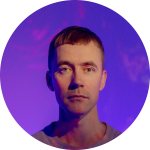
Olle Strandberg Colling is a director, choreographer, and project manager with a background as a circus artist. His trilogy for Cirkus Cirkör (Undermän, Underart, Under) has toured 60 cities on three continents with over 600 performances. He chairs Cirkuscentrum Sweden and is Artistic Director and CSO at Saloranta & De Vylder, an artistic collaboration with Sara de Vylder. They develop alternative models for creative processes, working locally, nationally, and internationally across various art forms. He is also one of the initiators of The Sphere, web3 research-creation project exploring new ecologies of funding for the performing arts, and supported by Creative
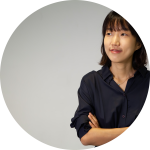
Jin Yim is an independent producer and researcher based in South Korea. She has worked on a variety of art projects, including performance, theater, contemporary circus, and multidisciplinary arts. Her focus is on the arts in public spaces and international mobility for performing arts. In 2019, she founded Project DARI, a producers’ collective that experiments with artists, producers, and festivals. Project DARI facilitates and mediates new ideas for the arts in public spaces. Currently, Jin is the deputy director of Suwon Theatre Festival and Gwangju Fringe Festival.


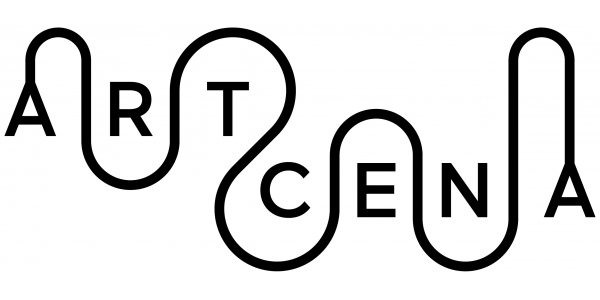

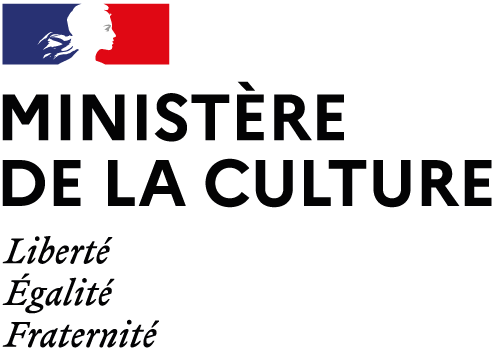
écrivez-nous : infocircostrada@artcena.fr